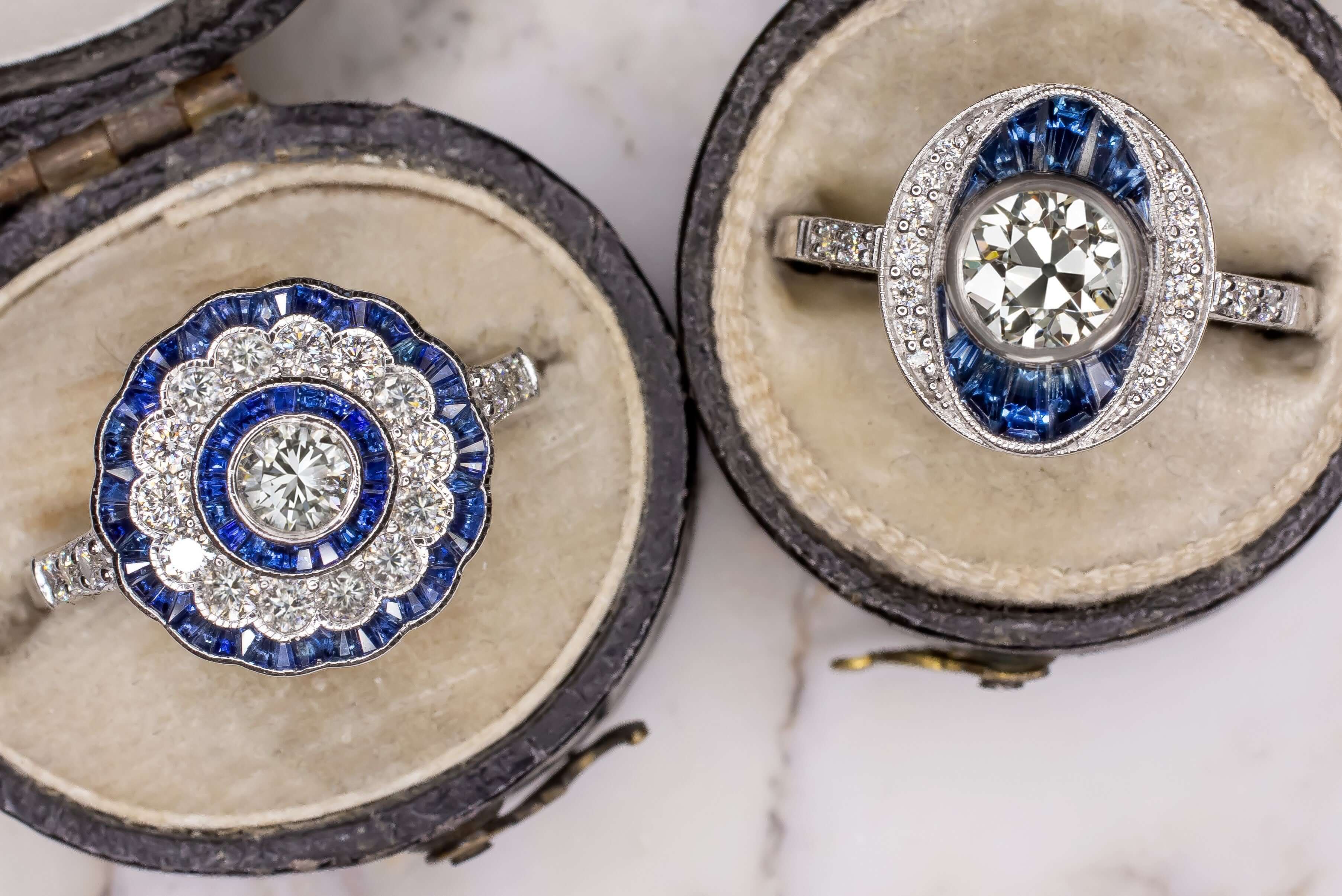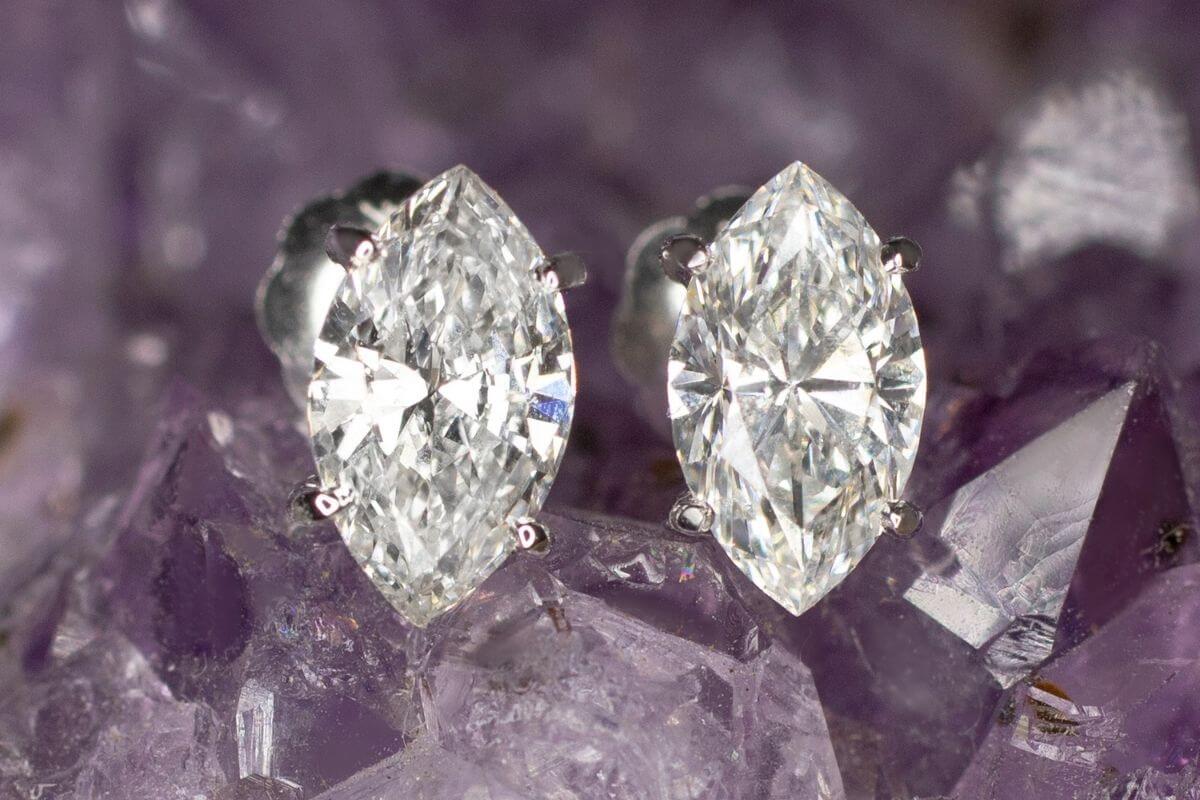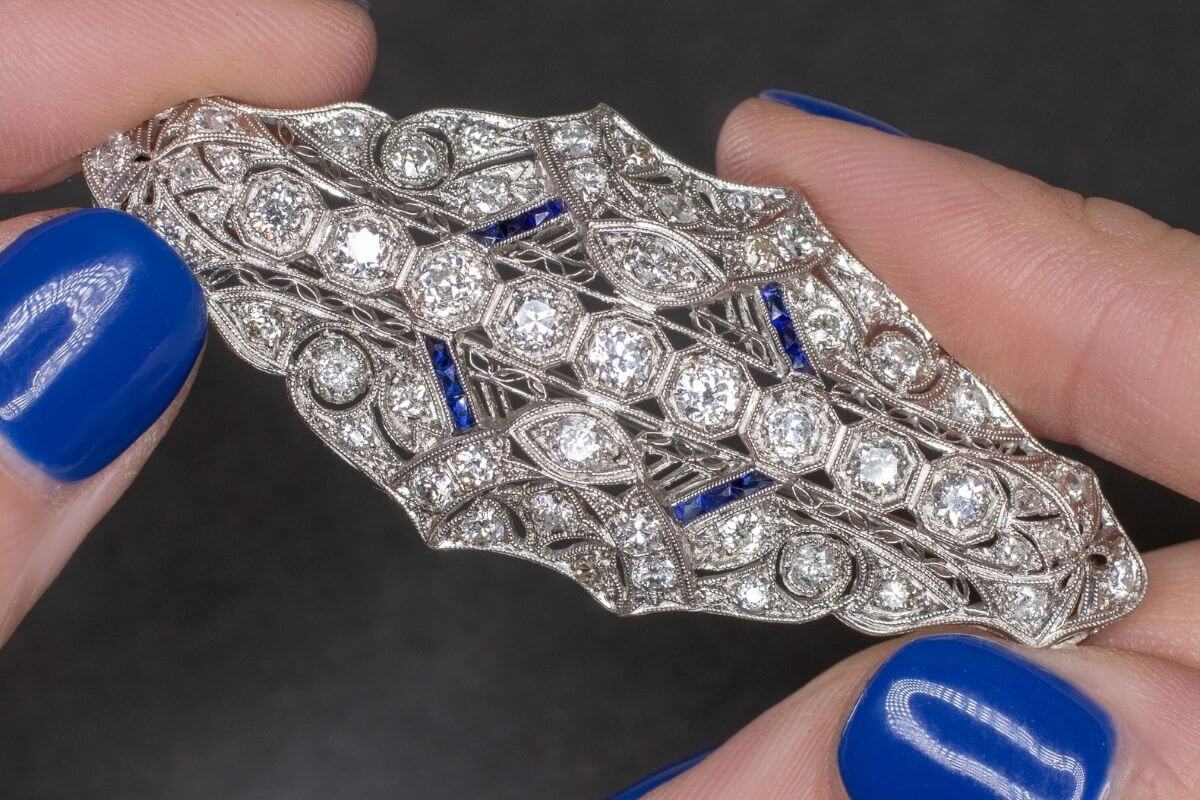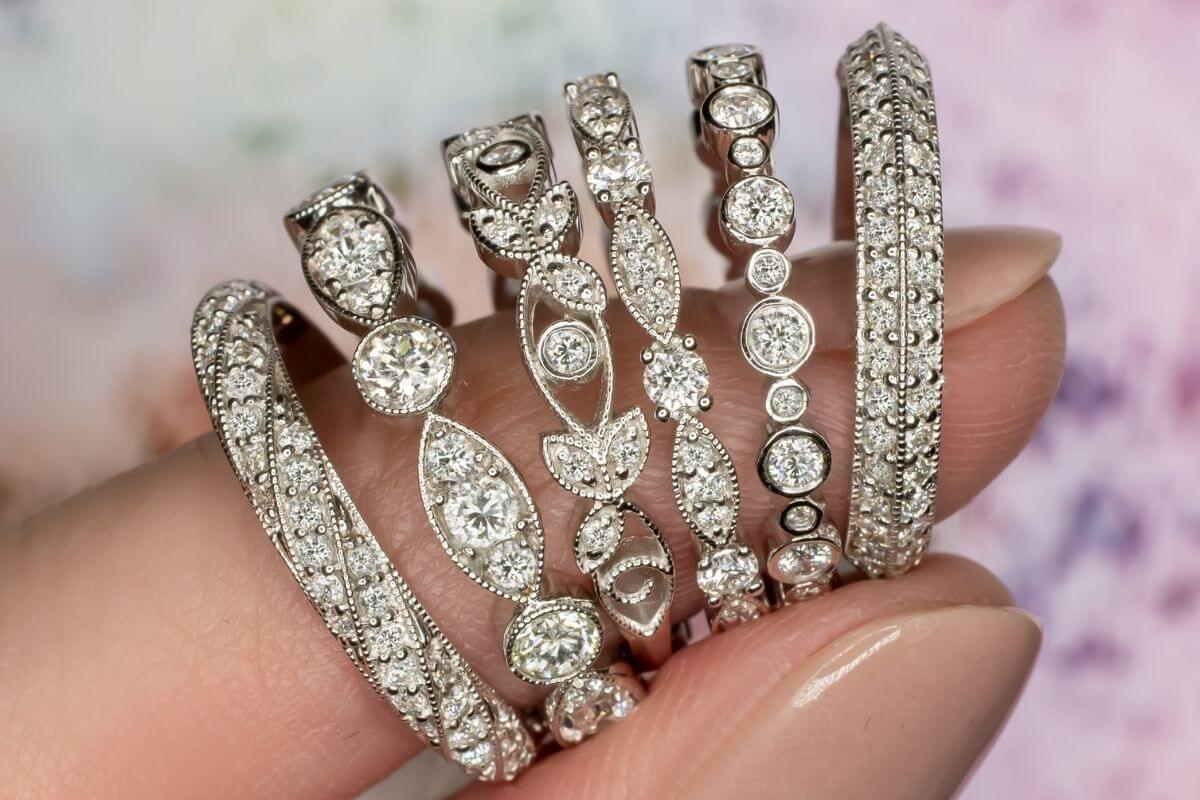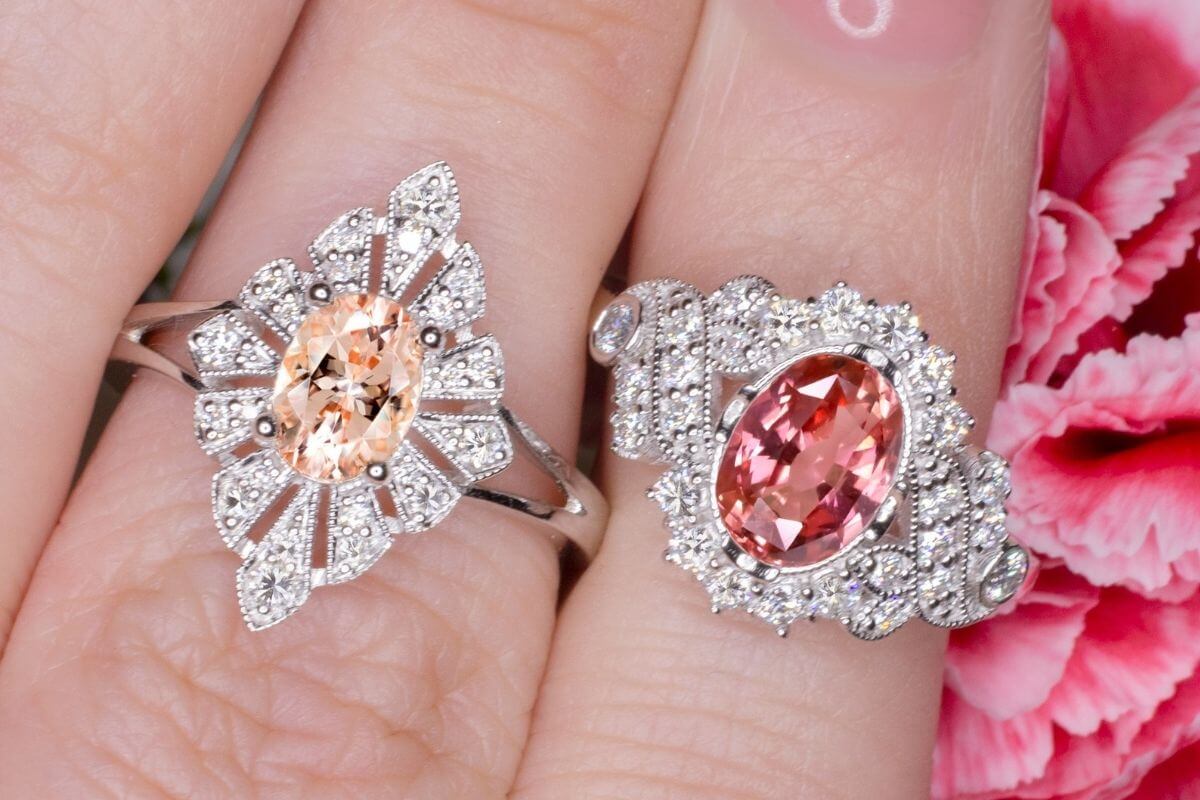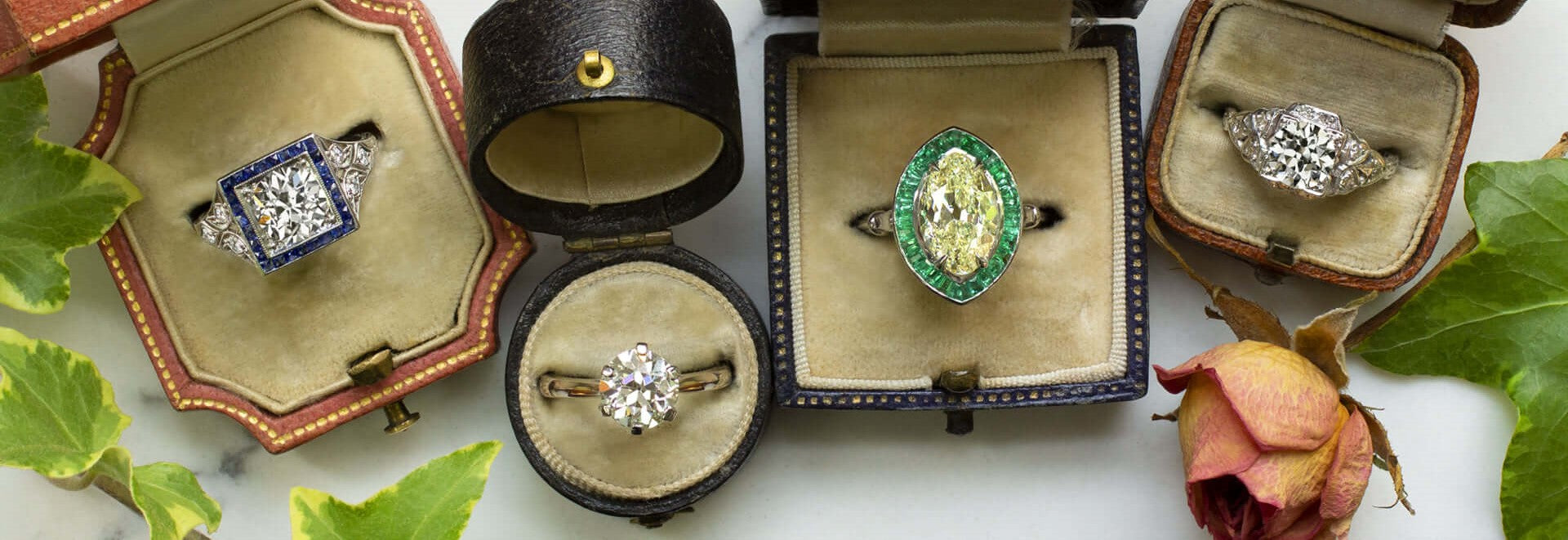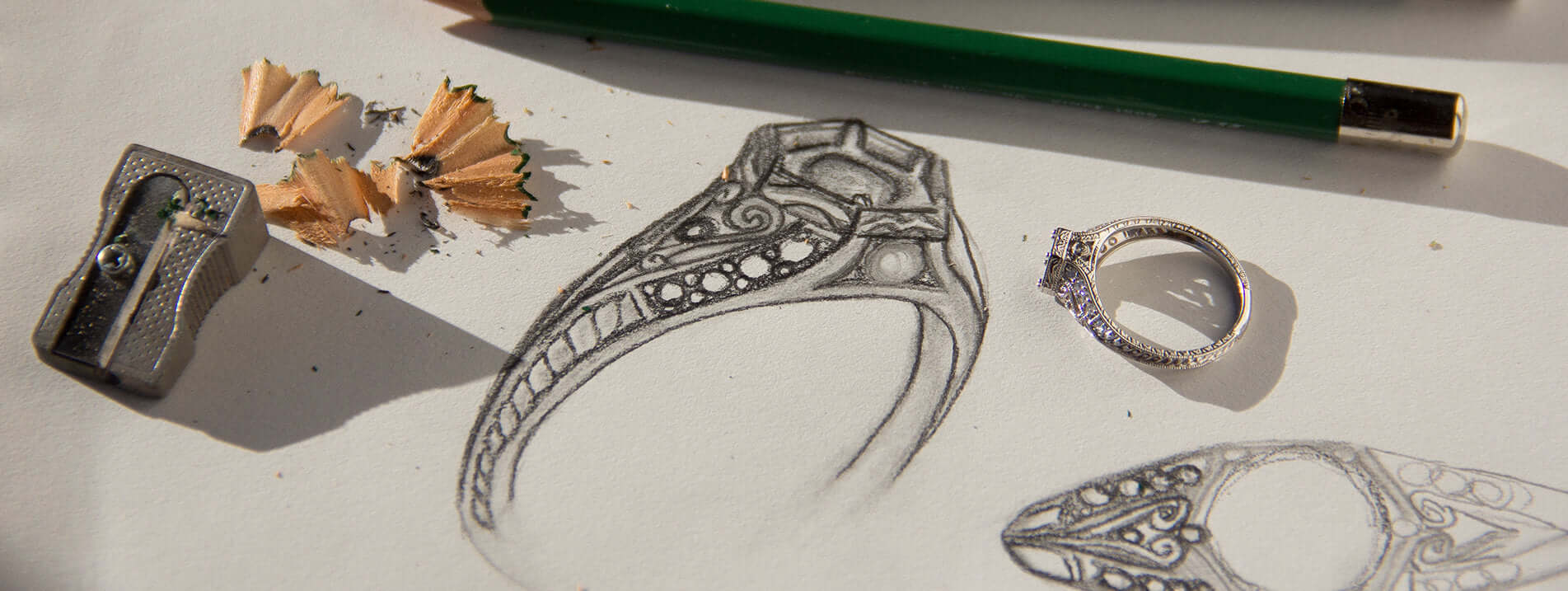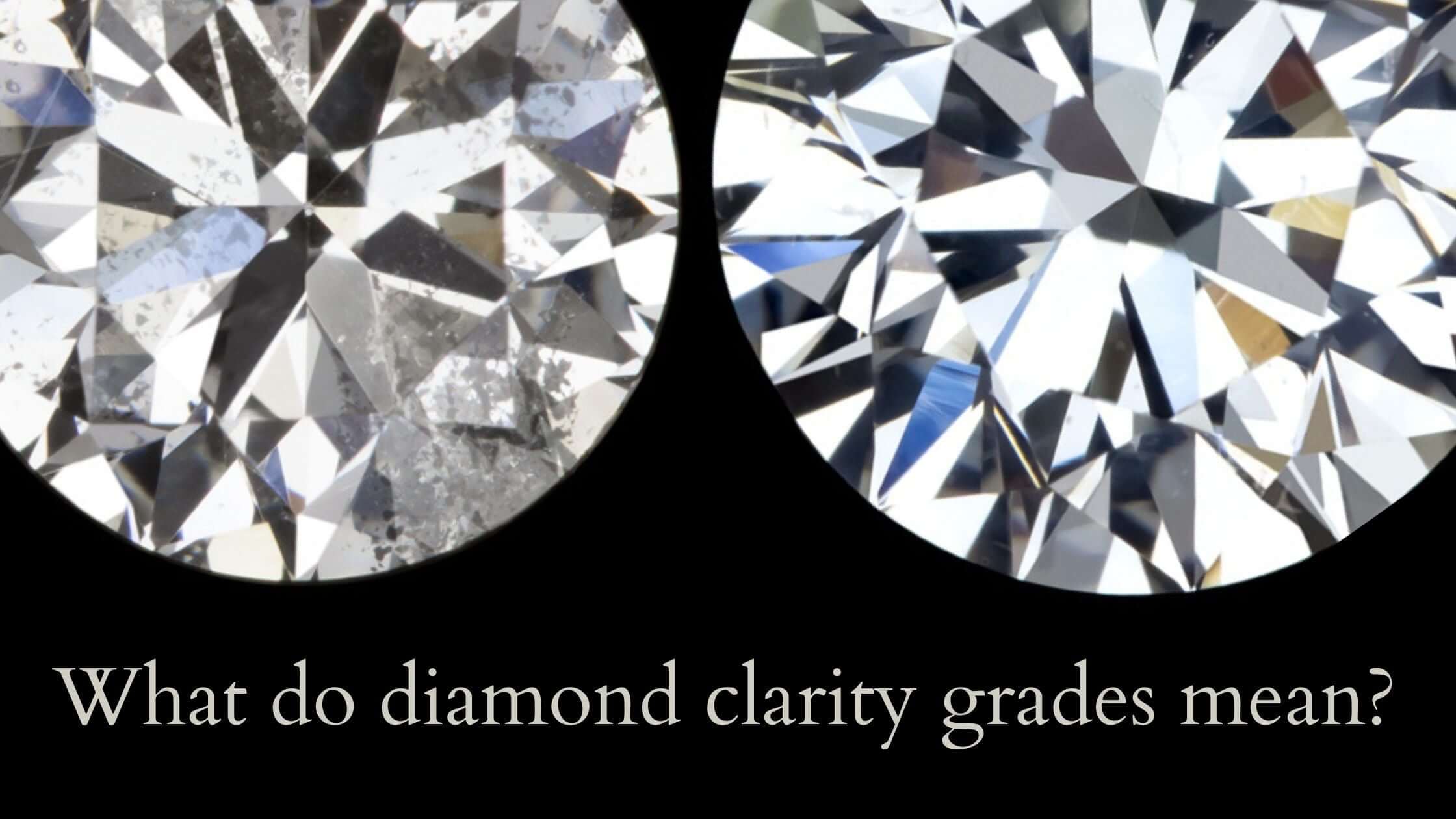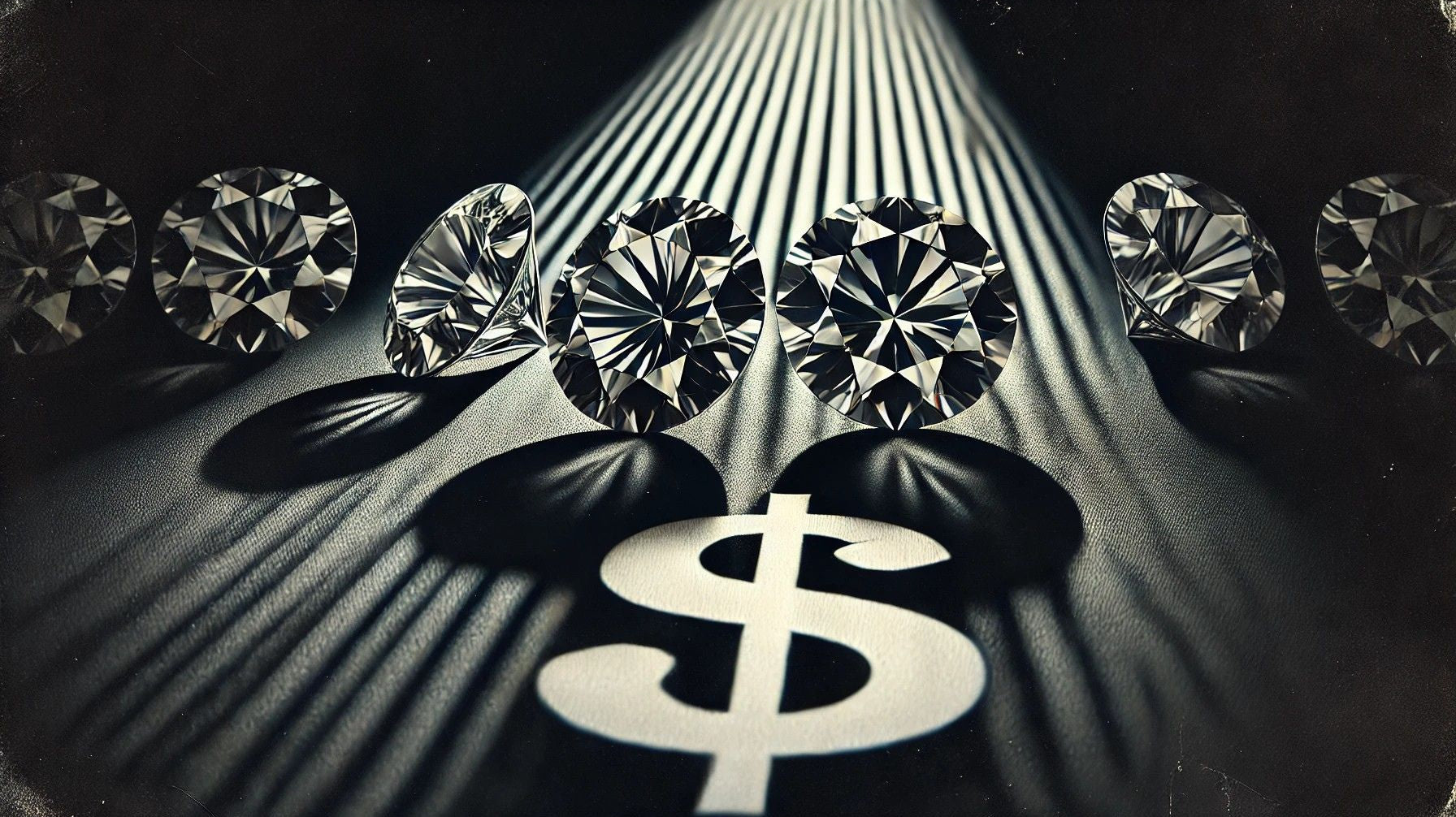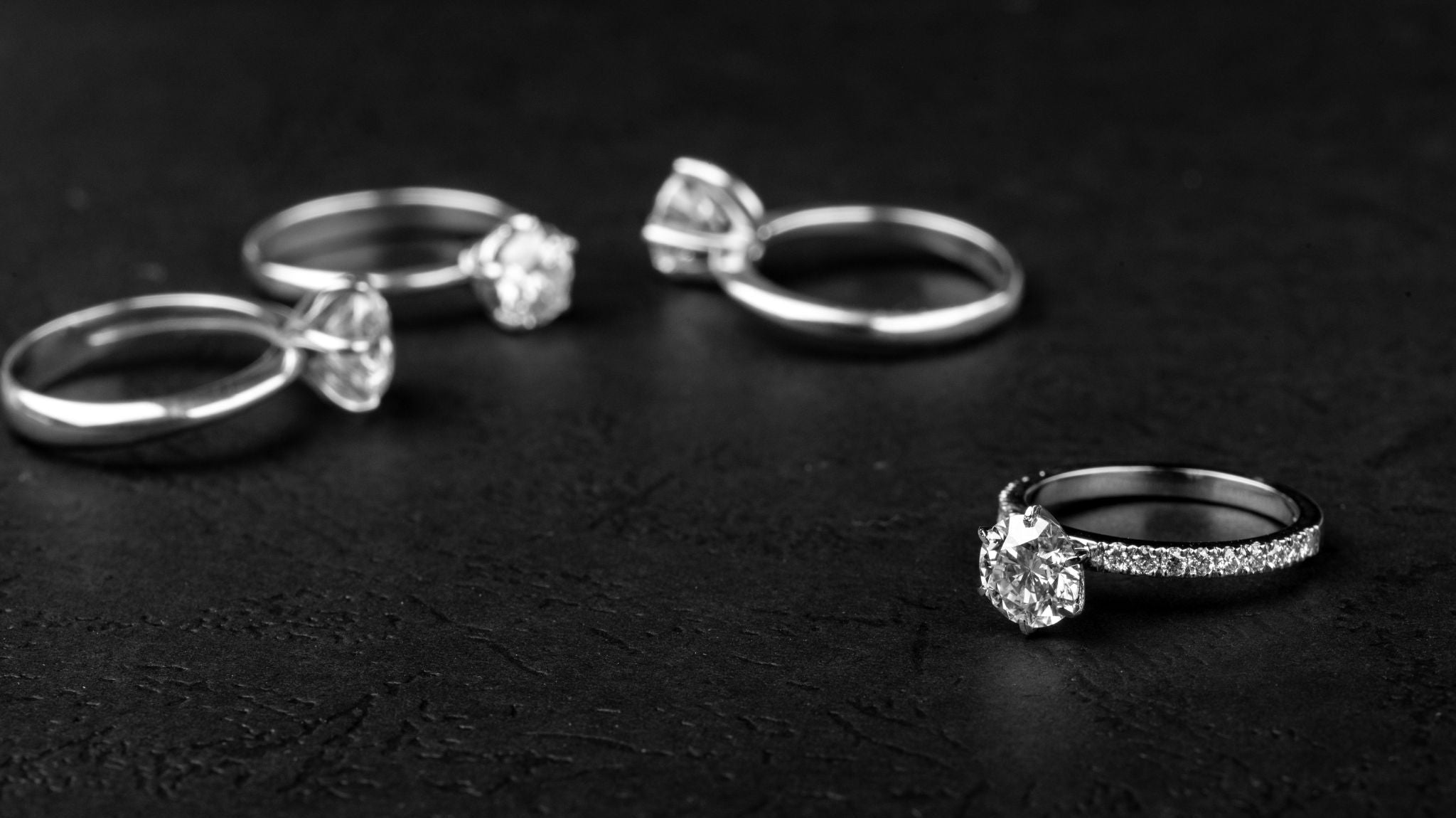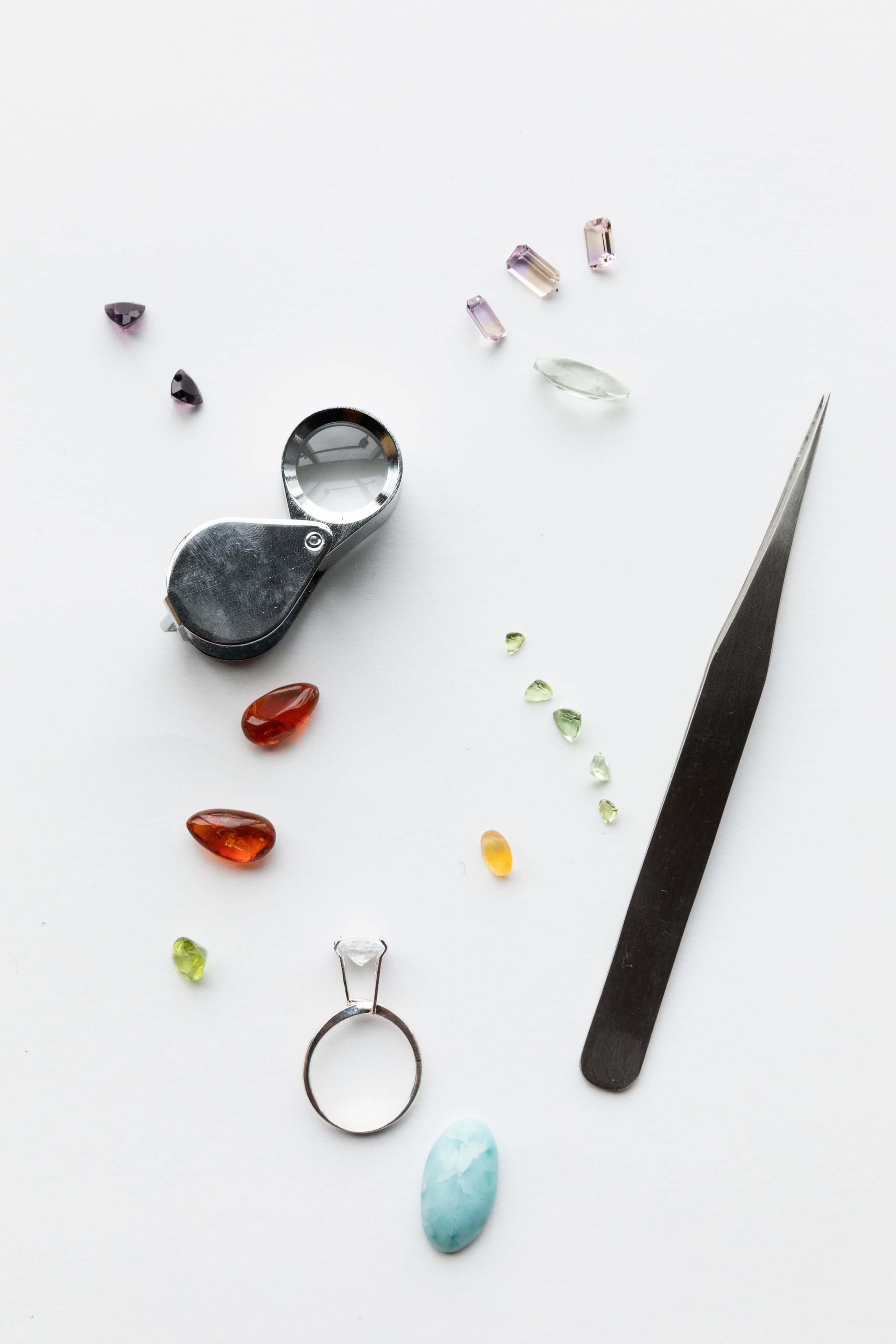What is an Inclusion?
Natural diamonds are formed under the extreme heat and pressure from deep within the earth. Due to this process of creation, diamonds will carry a unique set of birthmarks or freckles known in the jewelry industry as inclusions and blemishes. Determining a diamond’s clarity is objectively grading the absence of these naturally occurring birthmarks.
Despite the top clarity grade being named Flawless, these naturally occurring attributes of a diamond should not be thought of as “flaws”. Instead, each stone has its own unique set of characteristics - much like a fingerprint - which jewelers and gemologists use as a helpful aid in identification.
Inclusions are totally enclosed within a diamond or may extend out to a diamond's surface. Blemishes, however, are on the surface of the diamond and have the potential to be removed by additional polishing of the diamond material in the cutting process or through repolishing.
GIA standards
When GIA developed the 4Cs of diamond grading in the 1940s and 50s, its aim was to create an objective and standardized language to be used when describing the characteristics of a diamond. Because the diamond market is global, different centers of the trade around the world used different terminology, which could easily be confused or misinterpreted.
Diamond clarity grades today are based on the specifications GIA has determined and have been adopted throughout the diamond and jewelry industries across the globe. The clarity grades are based on the visibility of inclusions and blemishes using a 10x magnification loupe. Specific criteria are used in determining the differences between grades to make these divisions a more objective scale than had been used in the past. The diamond clarity scale has six categories (some of which are subdivided) for a total of 11 specific grades for determining clarity in natural diamonds.
- Flawless (FL) - No inclusions and no blemishes visible under 10x magnification.
- Internally Flawless (IF) - No inclusions and only insignificant blemishes visible under 10x magnification.
- Very, Very Slightly Included (VVS1 and VVS2) - Minute inclusions that range from extremely difficult (VVS1) to very difficult (VVS2) to see under 10x magnification.
- Very Slightly Included (VS1 and VS2) - Minor inclusions that range from difficult (VS1) to somewhat easy (VS2) to see at 10x magnification.
- Slightly Included (SI1 and SI2) - Noticeable inclusions that are easy (SI1) or very easy (SI2) to see at 10x magnification.
- Included (I1, I2 and I3) - Inclusions that are obvious under 10x magnification – and often visible with the unaided eye – which may affect transparency and brilliance.
What does Eye Clean mean?
Not to be confused with the I category of clarity grades synonymous with visible inclusions, the term Eye Clean is often used to describe a characteristic of the clarity grade given to a diamond. While this is not a definitive grade itself, determining if a diamond appears clean to the naked eye is a subjective yet helpful way of understanding how a diamond looks in real life - not simply on paper.
Diamonds that are used in earrings are commonly far more acceptable to have a lower clarity grade than an engagement ring diamond. Earrings tend to be viewed from a greater distance than jewelry worn on fingers, hence a diamond might be 100% Eye Clean when worn in the ear but not considered to be 100% Eye Clean even if it has the same clarity grade when it is mounted in a ring on the finger.
How Cutting affects the look of a stone
The way the diamond material is cut can determine a lot about the desirability of the finished polished stone. An emerald cut diamond with an SI2 clarity grade will be much easier to spot the grademaking inclusions as compared to a modern round brilliant cut that has an SI2 grade.
Step-cut faceting patterns such as the emerald cut, baguette and asscher have fewer facets and a larger table which highlights the internal nature of a diamond and have broad flashes of sparkle. There is nowhere for inclusions to hide in a step-cut, which is why diamonds with high clarity grades are often cut into these shapes - to clearly showcase the exceptionally impeccable material.
Brilliant faceting patterns such as the oval, pear shape, radiant, marquise, princess, heart shape, and modern round brilliant cut have many small facets which reflect light from several different angles to display great sparkle. This brilliance and play of light in these shapes greatly help to mask the visible inclusions of a diamond with a lower clarity grade.
A natural diamond which is lower on the clarity scale might not sound great on paper. However, one with a brilliant faceting pattern and a lower clarity grade can be an excellent way to save on one of the 4Cs while splurging on another.
Clarity Enhancements
Diamond manufacturers may treat their materials of lower clarity grades in order to “fix” the natural characteristic of the diamond material or to improve the appearance and saleability of these diamonds. The two most common diamond treatment methods are laser drilling and fracture filling.
Laser drilling is a method which can remove or lighten the appearance of inclusions deep within a diamond. A laser is used to drill from the surface of a diamond to a dark inclusion within the stone where the dark carbon material is either vaporized by the laser itself or “bleached” by a strong acid added through the drilled channel. The inclusion still exists (and the drill channel creates a new inclusion to the diamond as well) but the removal of the dark carbon material within the diamond can improve the visual appearance of the inclusions.
Fracture filling is a method where a surface-reaching inclusion such as a fracture or laser drill channel is filled with a glass-like material which closely mimics some qualities of a diamond. Fracture filling does not “fix” the cavity or function to improve a diamond’s clarity in the same way as laser drilling can. Due to the glass-like material which has been introduced to the diamond when fracture filled, stones with this treatment are often damaged during common jewelry repair work that uses heat or in the use of an ultrasonic jewelry cleaner. For this reason, it is always important to disclose any known treatments to a jeweler when a piece of jewelry undergoes even the most routine maintenance.
Galaxy Diamonds
A true alternative to the standards of clarity determined by GIA nearly a century ago is the aesthetic choice of highly included diamonds. These are stones which would be considered, literally off the charts of the low end of GIA’s clarity scale, however it is these bold and colorfully included diamonds which have become highly desirable for their one of a kind character.
Production of this material is entirely opposite to how diamonds have been selected for generations. Rough material is specifically selected for its highly included nature and is then cut with a facet pattern which showcases these naturally occurring abnormalities.
Sometimes called Salt and Pepper Diamonds, we at Ivy & Rose have come to describe these as Galaxy Diamonds for their boldly scattered inclusions and interstellar qualities. Diamonds which have colorful inclusions like garnet crystals are described as Fancy Included Diamonds. These terms are not official standardized phrases by any means, but a more subjective way of describing the nature of the inclusions on a diamond similar to how Eye Clean is used.

